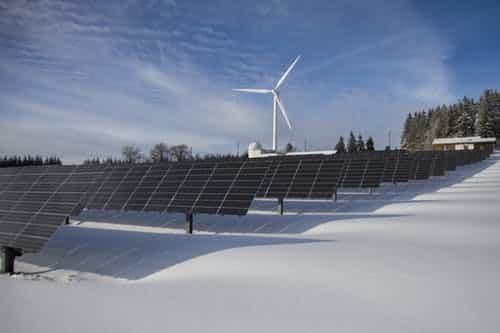U.S. Treasury Issues Final Rules for Advanced Manufacturing Tax Credit to Boost Domestic Clean Energy Supply Chain

The U.S. Department of the Treasury and the Internal Revenue Service on Oct. 24 issued final rules for the Advanced Manufacturing Production Credit to bolster domestic manufacturing in the clean energy sector. The final rules largely follow the proposed regulations issued in December 2023. The rules clarify definitions and credit amounts for qualifying components including solar, wind, and battery components, inverters, and applicable critical minerals.
The final rules aim to grow the U.S. clean energy manufacturing base, create jobs, and enhance energy security, building out reliable supply chains required to meet climate goals. Taxpayers can now include materials and extraction costs as production costs for eligible critical minerals and materials under certain conditions, encouraging investment in responsible U.S. extraction and processing.
Most importantly, the tax credit is expected to drive private sector investments into the domestic clean energy industry. Since the 2022 Inflation Reduction Act passed, U.S. clean energy manufacturing has attracted more than $126 billion in private investments, according to data from the Rhodium Group. This investment includes $77 billion for battery manufacturing, $6 billion for critical minerals, $8 billion for wind, and $19 billion for the solar sector. The tax credit is particularly beneficial for start-up companies that have low tax liability as it qualifies for the act’s novel monetization provisions, ensuring businesses receive the full value of the incentives.
In addition to technical components such as batteries and inverters, the final rules also provide details on applicable critical minerals. Critical minerals eligible for the tax credit include aluminum, cobalt, graphite, lithium, nickel, and chromium. The supply of these minerals is vital for the growth of clean energy manufacturing as they are found in numerous components like wind turbines, electric vehicle motors, and batteries.
The new rule also details the conditions under which taxpayers can claim the manufacturing tax credit, with provisions to prevent abuse, waste, and fraudulent use of the tax credit including crediting activities that are not value-added and duplicate crediting of the same component.
The rules are set to be published in the federal register on Oct. 28 and take effect 60 days after this date.
EnerKnol Pulses like this one are powered by the EnerKnol Platform—the first comprehensive database for real-time energy policy tracking. Sign up for a free trial below for access to key regulatory data and deep industry insights across the energy spectrum.
ACCESS FREE TRIAL